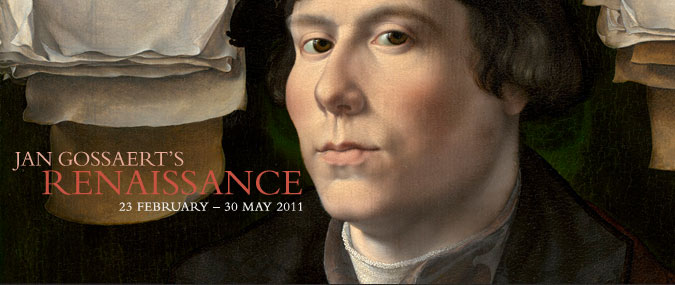Jan Gossaert, a native of Flanders (active 1503; died 1532), was one of the most startling and accomplished artists of the Northern Renaissance. ‘Jan Gossaert’s Renaissance’ is the first exhibition dedicated to the artist for over 40 years, and presents the results of a complete re-examination of his work, including new technical discoveries.
About Jan Gossaert
Working for wealthy and extravagant members of the Burgundian court in the Low Countries in the first three decades of the 16th century, Gossaert was especially noted for his sensuous nudes, painted to evoke the sheen of marble, and his stunning illusionistic portraits in which he plays intriguing spatial games.
The first northern artist to draw directly from antiquity in Italy (during a visit to Rome in 1508–9), Gossaert was a peerless exponent of the illusionistic properties of oil paint as practised by his countrymen from Jan van Eyck onwards.
About the exhibition
The exhibition features over 80 works, including many of the artist’s most important paintings, including the ‘Virgin and Child’, 1527, Prado, Madrid, and ‘Hercules and Deianeira’, 1517, Barber Institute of Fine Arts, Birmingham. It also features drawings and contemporaneous sculptures of the Northern Renaissance.
The National Gallery has one of the largest and finest collections of Gossaert’s paintings in the world – a highlight being The Adoration of the Kings (1510–15). This exhibition allows them to be set in the context of the full range of the artist’s work, from the fruits of his early visit to Rome to the unusually erotic presentation of the nude in his Adam and Eve series.
Audio guide
An audio guide for 'Jan Gossaert's Renaissance' is available from exhibition ticket desks.
This exhibition was organised by the National Gallery, London, in association with The Metropolitan Museum of Art, New York (where it is on display from 5 October 2010 to 17 January 2011).
The exhibition is supported by the Flemish Government.


